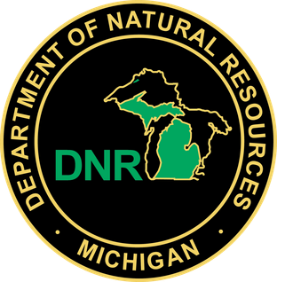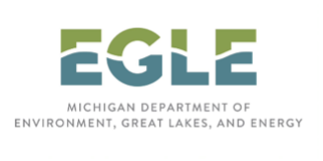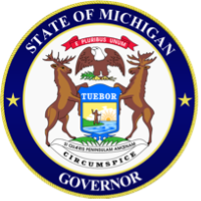Natural and Working Lands and Forest Product Workgroup Recommendations to the Michigan Council on Climate Solutions
Short Description
Michigan State University, Forest Carbon and Climate Program (MSU FCCP) Director, Lauren Cooper served as Co-Chair of the Natural Working Lands and Forest Products Workgroup, alongside Scott Whitcomb, of the Michigan Department of Natural Resources. This workgroup developed and summarized five key recommendations for achieving net zero greenhouse gas emissions in Michigan by 2050. These recommendations were delivered as a report to the Michigan Council on Climate Solutions.
The Michigan Council on Climate Solutions was formed under Governor Gretchen Whitmer’s Executive Order 2020-182. The council was created to serve as a board of advisors under the Department of Environment, Great Lakes, and Energy (EGLE) and to assist with implementation of goals under the Michigan Healthy Climate Plan.
The report puts forward five overarching recommendations for how wise management of the state’s natural and working lands and forests can play a critical role in reaching the goal of net zero greenhouse emissions by midcentury. To address the complexity of land use and land management decision making, the workgroup established seven guiding principles. These guiding principles represent the workgroup’s shared goals in creating emissions-reduction recommendations that balance incurred trade-offs with generated co-benefits.
Guiding Principles
These principles are intended to be taken as a package. They are numbered for reference purposes only; the numbers do not indicate a ranking or priority.
- Focus on strategies and solutions that are necessary in the next nine years to achieve significant greenhouse gas reductions (including CO2, methane and nitrous oxide) and carbon sequestration in natural working lands and forest products by 2050. Ensure that solutions:
- Are science-based, verifiable, and have solid research support behind them
- Will maintain environmental integrity (from a carbon retention perspective) as the climate changes
- Build a shared understanding of insights from work both within and outside of Michigan, but tailor solutions to Michigan’s unique characteristics and needs.
- Consider cost and benefit trade-offs when developing and prioritizing solutions.
- Ensure that solutions and strategies place a priority on effective and equitable community engagement, impacts and choices. This includes engaging tribal nations.
- Prioritize strategies that have as many co-benefits as possible, including for the health and resiliency of Michigan’s natural resources, ecosystems, people, and communities. We acknowledge that these are interdependent and mutually supporting.
- Target strategies at all appropriate programs, organizations, or levels of government, while considering feasibility of action. Leverage existing initiatives or partnerships wherever possible.
- As we work together, embrace, and embed in all of our ideas and actions the key values of equity, transparency, and integrity and clearly communicate these to stakeholders and the public.
Summarized Recommendations
The full recommendations, including additional details and a rationale for each, follow this list in the full report. The numbers for each recommendation are for reference purposes only and do not reflect a ranking or prioritization.
- Maintain and develop healthy forests across public and private land.
- Implement a Healthy Soils Act for Michigan in which the Legislature and Governor can set a floor for future funding and attract additional funding for soil, water, and habitat conservation by recognizing that protecting and enhancing the state’s soils have a direct impact for climate solutions.
- Protect existing wetlands and waterways, create new and restore wetlands where appropriate, and increase carbon storage in waterway green infrastructure in increase both mitigation and adaptation benefits.
- Enhance and develop a transformative bioeconomy that 1) implements and promotes natural, sustainable, and low-emission materials production and use, 2) reduces emissions across all NWL commodities (agricultural and forest products), 3) reduces waste and increases efficiency, and 4) promotes sustainable land use planning.
- Promote climate initiatives and ensure multi-level action for mitigation and adaption across natural and working lands by acting in a leadership capacity, fostering enabling conditions, promoting knowledge transfer, and increasing access to needed data and information.
The full report is available on the FCCP Reports & Writing page.
Collaborators/Team
- Lauren Cooper (MSU FCCP)
- Scott Whitcomb (MI DNR)
Images/Logos
 |
 |
 |


 Print
Print Email
Email